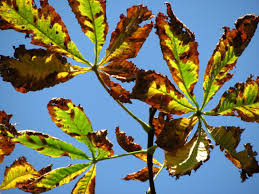 The beauty of the evergreen is that it provides a hint of springtime even in the dead of winter. There are few things that warm the soul more than the sight of a brilliant green tree against a backdrop of winter majesty. Unfortunately, evergreens seem to be under attack and everywhere you look they are turning brown or losing their needles. What are the causes of browning in evergreens and what can you do about it? More importantly, how can you help your customers do something about it?
The beauty of the evergreen is that it provides a hint of springtime even in the dead of winter. There are few things that warm the soul more than the sight of a brilliant green tree against a backdrop of winter majesty. Unfortunately, evergreens seem to be under attack and everywhere you look they are turning brown or losing their needles. What are the causes of browning in evergreens and what can you do about it? More importantly, how can you help your customers do something about it?
The Reasons Evergreens Brown
There are a few basic reasons that evergreens turn brown. A little bit of browning is normal and occurs as needles shed. For most evergreens, the interior of the tree will turn yellow or brown on a cycle that occurs once every 3-6 years (depending on the species). Massive browning or browning that doesn’t relent is a problem, however, and may be caused by freezing, infestations, or lack of water and nutrients.
Watering Evergreens
Like every tree, evergreens need water. They should get 1-3 inches per week during the first year after they are planted as long as the ground isn’t frozen. Deep watering is better than shallow watering because it promotes strong root development.
Once an evergreen is established, it should be watered every 4-6 weeks if there is no rain. It is best to keep the water off of the foliage to avoid mold growth. It is also important to ensure that water does not pool around the tree because that can lead to fungal growth in the roots. Drip irrigation is the best option for evergreens, so keep a handy supply of drip-hoses around for customers who need to water their evergreens.
Evergreen Nutrients
Evergreens require less fertilizer than deciduous trees, but they still need nutrients. In general, if growth rate and color are normal, fertilizer isn’t needed. Slow growth, sparse foliage, thinning needles, and browning are all signs that a tree, if it hasn’t been fertilized already, is in need of nutrients. It is also a good idea to fertilize evergreens after damage or if they are planted in poor soil.
Evergreens prefer fertilizer that has slightly more nitrogen than phosphorus and slightly more phosphorus than potassium. A 10-8-6 fertilizer is a good all-around choice, so make sure you keep it in stock and mark it as being good for evergreens. Try to fertilizer with every evergreen you sell or install. It will not only increase your income, it will ensure that customers are lot happier with their trees.
Frozen Evergreens
Most people think that evergreens can withstand even the coldest of temperatures, but they do have their limits. The real problem for evergreens in winter usually is not temperature, it is wind. When high winds combine with strong sunlight, evergreens can lose a lot of water to transpiration (water movement through their needles). It is important to protect evergreens from harsh winds so that they do not dry out. Encourage customers to build a barrier to protect their trees or to cover them in burlap during windy or extremely sunny winter days.
Evergreen Pests
There are a number of insects and fungi that affect evergreens and they seem to have become worse in recent years. Root rot and boring insects like the Hemlock Wooly Adelgid are causing serious problems for many evergreens, even in national parks and forests. Other pests that are frequent problems include
. Aphids,
. Bagworms,
. Bark beetles,
. Needle miners,
. Pine moths,
. Pine Scale,
. Sawflies, and
. Spider mites.
Learn how to identify specific types of insect damage that are common in your area so that you can direct customers to the right pesticide or biological solution. Remember that catching pests early, particularly fungi, is the best bet for saving any particular tree. The extension for your state university can probably offer you the most up-to-date information about evergreen pests in your area.
Resources
http://www.ncrcd.org
http://www.extension.umn.edu
http://www.nfs.unl.edu
